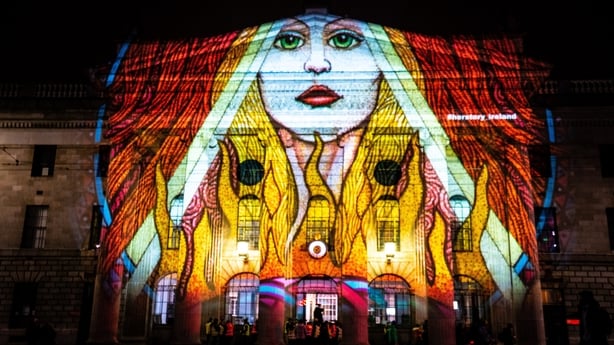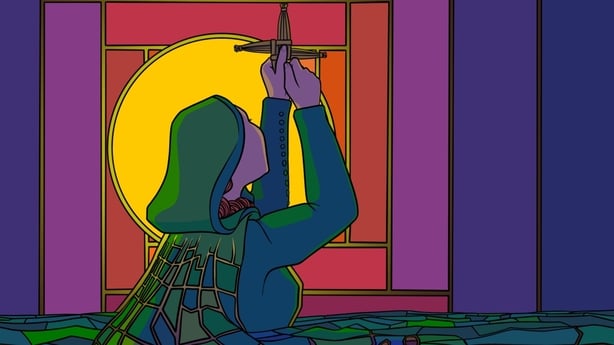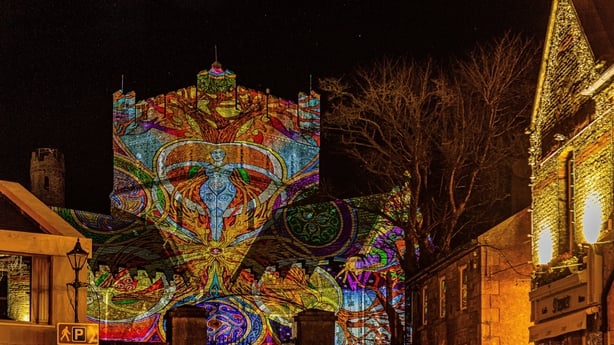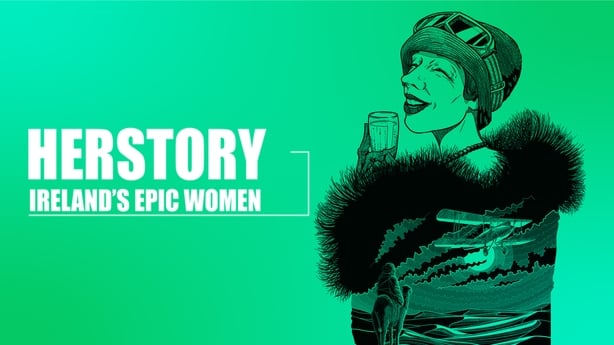As we build up to St Brigid's Day, Melanie Lynch (CEO & Creative Director of Herstory), shares some of the legends and stories surrounding this amazing woman!
Herstory ran the successful campaign to make Brigid's Day Ireland’s a national holiday - the first in honour of a woman.
The Goddess Brigid was a pan-European Celtic goddess, honoured from Turkey to Spain. Saint Brigid ran a thriving monastery in Kildare and her true Christian message spread through pilgrimages far across Europe.
But before we join the celebrations, Melanie tells us more about Brigid...

Photo credit: Dodeca
The Goddess
Long before Christianity, Brigid was a pan-European Celtic goddess. Rising from Danú and the land of the Danube in southern Germany, her influence spread all across Europe from Turkey to Spain.
In Ireland, Brigid was one of the original goddesses of the Tuatha dé Danann and she was the daughter of the Dagda, a High King and her mother was the Morrigan. She was celebrated as an Ulster goddess – in ancient times, north of the River Boyne was Ulster.
Brigid is a triple goddess – the goddess of healing symbolised by the element of water, goddess of the alchemical force of fire and goddess of poetry.
Brigid is known as the Fiery Arrow, often depicted with flames coming out of her head. As the Fiery Arrow she represents the deep primal feminine energy of creation/ inspiration with masculine energy (arrow) rising beneath.
You have heard of the goddess Brigid, but what about Tlachtga, the Morrigan or Airmid? Ancient Ireland was synonymous with goddess culture. In fact our nation is named after the Goddess Ériu.
Brigid the pre-Celtic pagan Goddess and the Christian Saint appear to have morphed into each other over the centuries. In the legends of Brigid we cannot be sure where the Goddess ends and the Saint begins.

Saint Brigid
There's much more to Saint Brigid than the legend of her ever-expanding cloak and the iconic pagan cross.
St Brigid was born in AD 450 in Faughart, near Dundalk in County Louth. Her father, Dubhthach, was a pagan chieftain of Leinster and her mother, Broicsech, was a Christian.
She was a spirited youth activist, feminist and environmentalist who fearlessly championed the rights of the poor and animals. There are legends of how the young Brigid would take butter and food from her mother’s pantry and gift it to the poor.
Legend has it St Brigid’s father wanted to marry her off but she decided to devote her life to service, so she pulled out one of her eyes to destroy her beauty.
In The Life of Brigid, her biographer Cogitosus reveals St Brigid was a Bishop who co-founded a double monastery with the reclusive monk Conleth in Kildare from the Early Christian tradition. Within 100 years of her death, there was a thriving egalitarian monastery of men and women, living and practicing equally.

The Abbey of Kildare became one of the most prestigious monasteries in Ireland, and was famous throughout Christian Europe. It is timely that the current Bishop of Kildare & Meath in the Church of Ireland is a woman - Bishop Patricia Storey.
The word Brigid means "exalted one". The root of her name, Brí, comes from the Indo-European meaning for female divinity.
For more information about the themes, traditions and rituals we recommend this brilliant article by Mari Kennedy, Founder of The Celtic Wheel.
Herstory got everyone a day off school!
Following Herstory's successful 3 year campaign, Brigid’s Day is Ireland’s new national holiday - the first named in honour of a woman: Brigid, our matron Saint and Celtic Goddess and a celebration of all mná. Herstory ran a petition, lobbied politicians, and produced an annual Festival of Light on Brigid’s Day to generate the perfect media storm.
St Brigid’s Day is the first Irish national holiday named in honour of a woman and high time as Ireland already has 4 holidays named after men: Jesus, Patrick and Stephen. What a victory for all mná!

About Herstory
Founded in 2016, the Herstory movement tells the stories of modern, historic and mythic women. Our mission is to give the public authentic female role models and a game-changing education programme, inspiring countries around the world to start their own Herstory movements.
Since 2017 the annual Herstory Light Festival lights up iconic landmarks and sacred sites in honour of women to mark Brigid's Day.
In 2018, Herstory initiated and co-produced Blazing a Trail for the Department of Foreign Affairs – it is the first women’s exhibition to tour the Irish Embassy network worldwide.
In 2020, Herstory partnered with RTÉ, Underground Films, EPIC The Irish Emigration Museum and the BAI for Herstory on RTÉ - the first comprehensive women’s storytelling platform on RTÉ - featuring a major documentary TV series, animation series, podcasts, school workshops and microsite.

